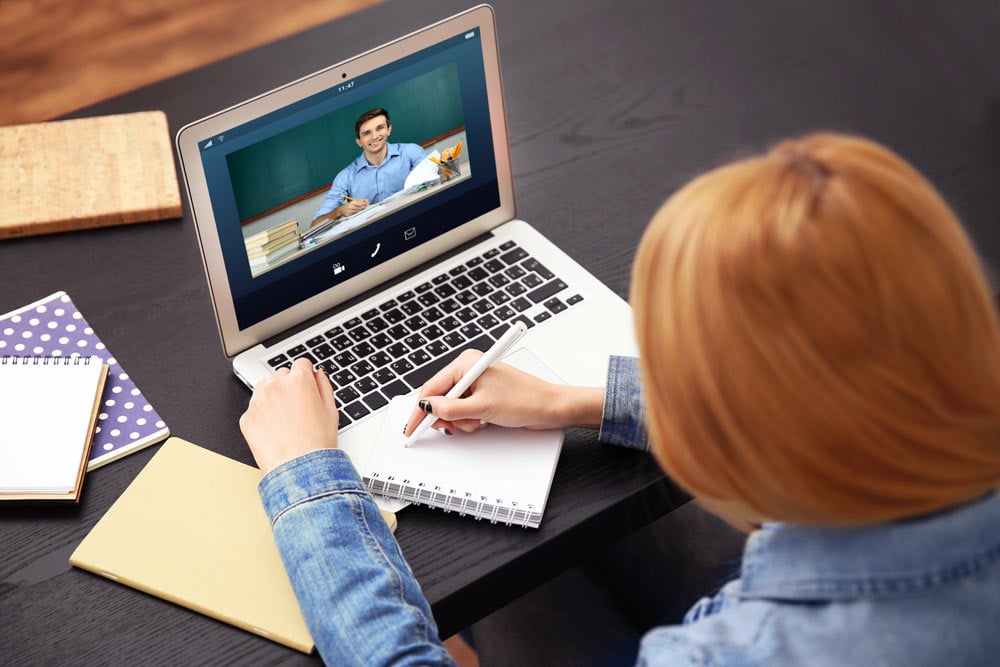
The flipped classroom has become a reality in many educational institutions around the world. Educators have acknowledged that the process of combining technology with traditional teaching methods has ultimately increased learning retention and created a more personalized learning environment. However, while many teachers understand what the flipped classroom model entails, they have trouble actually identifying how they can implement the process themselves.
What Is a Flipped Classroom?
Over the years, educators have continuously adapted their learning methodologies to successfully cater to students and their needs. In recent years, technology advancements have driven the expansion of e-learning practices, one of which is the effective flipped classroom approach.
When a teacher flips their classroom, they are essentially shifting the role of traditional classroom activities. In a traditional classroom setting, teachers would provide educational content to be consumed while the students attended physical lectures. With the flipped classroom, students are given a series of short video lessons or other material with educational content to be watched away from the classroom. Teachers would then use their classroom time on a more practical basis, where students are given the freedom to apply their knowledge under the guidance of the teacher.
Adapting Teaching Practices to Accommodate Today’s Students
There is still a cloud of uncertainty under the role of video in education. Yes, using video has helped teachers significantly, but many have failed to actually create a fully integrated syllabus where the primary focus makes use of video lessons. One reason many students are yet to see the flipped classroom make its way into their school may be because of the educator’s preferences rather than the model’s perceived benefits.
It’s interesting to see how different generations adapt to and appreciate particular learning approaches. Baby boomers enjoyed democratically run classrooms and experimenting with new skills independently. Then there is Generation X, who view learning as an independent and self-directed process. Millennials, on the other hand, prefer activity-based group work and were the first generation to have used technology for the duration of their lives. But what about Generation Z? After adapting their teaching practices and educational content for Millennials, teachers again had to redevelop their approach to appeal to the following generation. Luckily, Millennials and Gen Z have one common characteristic: They have both been shaped by technology.
Traditionally, classrooms were constructed to keep distractions out and ensure the students' full focus is on the teacher. However, modern-day classrooms are being reformed to accommodate new technologies and learning styles. Rather than configure classrooms to be a place where curriculums are taught, flipped classrooms and other video-based curricula have helped refine and restructure classrooms to help support the educational journey.
How to Flip a Classroom
There are different ways for educators to successfully flip their classrooms. Teachers will have to adapt and fine-tune their method to make sure that it is not only embraced by students, but successfully challenges and engages them. The end goal of flipping the classroom is to shift the focus of the class to a more student-centered pedagogy.
Thinking about getting started? These five steps for flipping classrooms have been carefully selected to ensure that students remain engaged and active in their learning experiences:
- Define the scope and objectives
Before getting started with creating a series of video lessons or investing in content creation platforms, educators need to clearly recognize what the outcome of flipping the classroom will be. It’s vital to figure out what students should accomplish before they enter class, during class, and after class.
Start off by defining the scope of the topic internally. Having a well-defined scope will help students create educational content more readily. A good way to tackle this is by collecting all of the content currently planned for that semester and breaking it down into relevant sub-topics. These sub-topics will take the form of the video lessons assigned to students, and each lesson should essentially build or connect to the next video lesson.
One of the core aspects of a flipped classroom is placed on how the students will apply the learned material. For students to just watch, listen, and take notes is not enough—and arguably no different to the traditional forms of teaching we see today. After every video lesson, teachers should create a lesson plan that will make sure the learning objectives have been met. This can take the form of projects, debates, design, group work, etc. Identify what students should know and how this will be assessed to ensure they are at the level expected.
- Plan and prepare educational content
Video has become essential in how we consume information. 45% of people watch more than an hour of Facebook or YouTube videos per week, and more than 500 million hours of videos are watched on YouTube each day. Although there are different forms of media teachers can use, it’s no secret that video has become the preferred tool for educators and institutions.
When it comes time to create the content, many educators will first wonder what should be included. For many, the initial thought is to record the lesson content as they would normally present it. This is a great place to start, but keep in mind that there may be better ways to present the content. Consider demonstrations, real-world applications, and even examples from the field. Each of these can help with comprehension while engaging students further with the content.
Before diving into a new topic, decide the best way to communicate the information. Educators should consider whether a particular tool is the best option for students to process the information. Is it easy to understand? If not, how can it be presented more clearly?
- Create activities that spark pre-class engagement
There’s a gap between getting students to watch the video lessons and ensuring they are ready for the in-class activities. It’s the teacher’s role to bridge any gaps and ensure that the students are well-prepared for all the in-class activities. There are various ways of achieving this—most of which are easy to introduce and assess. At the end of each video lesson, ask students to prepare or answer something. This can include solving a puzzle, researching examples, answering a set of questions, or summarizing what they learned.
- Prepare in-class activities that prompt further understanding
This step is all about applying the learning objectives outlined in step 1. How will in-class activities be structured? Will there be group work or individual projects? Make sure to choose an activity that relates to the previous video lesson. It’s important to remember that not everyone will be familiar with the flipped classroom model. For example, dedicate the first 10 minutes of each lesson to expand on the content shown in the video lessons and make sure students are in the right frame of mind—think of it as a catch-up session. Moving on, the remainder of the class should focus on engaging with active learning strategies to help students process the content they learned. This is where students can apply their knowledge through debates, group assignments, or individual projects.
- Evaluate and assess the model
When implementing the flipped classroom approach, one of the most important aspects is to evaluate the model’s impact and adjust as needed. A proven way of assessing how well students have understood the provided educational content is to plan both summative and formative assessment throughout the year. Essentially, teachers should be looking to see if their students’ learning improved as a direct result of the flipped classroom model. Once the classroom has been flipped, teachers need to look further than just students’ grade results. Gather feedback on what works about the new model and what should be changed, then implement any changes accordingly.
Using MimioMoovly to Flip a Classroom
Video truly is one of the most valuable tools that teachers have identified when helping students acquire more information. One of the biggest hurdles for teachers looking to introduce the flipped classroom model is the preparation of video lessons to be watched outside of the classroom.
Here’s how we can help: MimioMoovly is an all-inclusive video creation tool that’s perfectly suited for teachers looking to use video in education and engage students. MimioMoovly can be used to create engaging educational content that captivates students—without any particular set of design skills. In fact, all teachers need is an active internet connection and a MimioMoovly subscription. MimioMoovly offers over 1.3 million digital assets to create engaging video lessons, guaranteeing that students won’t become accustomed to the same static template presentation.
Keep in mind that flipping a classroom goes beyond simply introducing video content. Yes, video is an engaging tool, and one today’s students are both familiar and comfortable with. However, it’s not just about giving students videos to watch—it’s about getting the most out of the classroom time, engaging students with the content so they better understand concepts, and using the combination of at-home work and classroom time to help students achieve mastery. Blindly adopting the flipped classroom model without tailoring it to suit students’ needs will not result in success. It’s imperative that educators plan, prepare, and adjust as needed to ensure that all students will achieve the desired outcome.
Ready to get started? Learn more about the MimioMoovly video editing software and find out how to try it free for 30 days!>>


